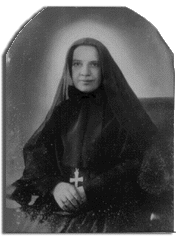“O Ark of the New Covenant, clad on all sides with purity in place of gold, the one in whom is found the golden vase with true manna that is the flesh in which lies the God-head.” -- St. Anthanasius (295-373)
Back in the Old Testament, the Ark of the Covenant was the holiest of holies in which no mere man could touch and not die. And, when Uzzah touched the Ark he was slain by God because the Ark is undefiled and has no place in sin (cf. 2 Sam. 6:7). Inside contained what, at that time, was the most important objects by God, and no mere man could touch them.
God is completely filled with glory and power, yet He also loves us beyond recollection. In the Old Testament, the Ark of the Covenant contained the most holy objects: The Ten Commandments, manna, and Aaron’s staff. These objects were directly linked with God and were greatly special, but it is further true that these objects were not God. This ark was so holy no one could touch it and not die except the chief priest one day a year, but these objects still are nothing compared with Christ, who is the epitome of holiest. Now, Mary is the Ark of the New Covenant, which holds a much more powerful object than manna or a staff – Christ Himself. Mary is the holiest of all humans having carried within her the greatest splendor - Our Lord.
Let us look at Luke 1:35 where the Archangel says to Mary: “The Holy Spirit will come upon you, and the power of the Most High will overshadow you.” This word “overshadow” comes from the Greek word "episkiasei", which refers to a glorious instance. This same Greek term was used previously in Exodus 40:34-35 to describe the Temple; the clear resemble to the Temple and Mary shows again the Mary is to be a great temple for God to come into the world and save us. She is the new Ark that held the greatest gift to the human race, and she must have been pure and sinless to be able to carry the Lord within her. Some say that making Mary into the Ark of the New Covenant shows we worship her, but we do not worship her just as the people of the Old Testament did not worship the ark itself. Instead, what was inside of the Ark was adored just as we adore the treasure inside Mary, who is Our Lord. Let us remember every time we say the Rosary that we recall God’s saving power through her willingness to humble herself.
Luke wrote this parallel under the careful guidance of the Holy Spirit along with his account of the Visitation, which also show reference to Mary being the Ark of the New Covenant.
In Luke 1:39 it states that Mary rose and went to her sister resembling the man, Daniel, rising in 2 Samuel 6:2. Also, further in Luke 1:42, upon Mary’s visit to St. Elizabeth, St. John the Baptist leapt in his mother’s womb alluding to 2 Sam 6:16 where King David leap for joy before the Ark of the New Covenant. Finally, St. Elizabeth responded to Mary by asking, “How can the Mother of my Lord come to me," (Luke 1:43) but this, once again, resembles Old Testament writings especially in 2 Sam. 6:9: “How shall the ark of the Lord come to me?"
These instances of the Old Testament mirroring the New Testament show us how many occasions, from the grace of baptism mirroring the Great flood to the Bread of Life first mirrored in the manna in the desert, relate to each other. However, even though the image of Mary as the Ark is resembled very accurately it does not have to mirror it completely. For example, scholars indicate that King David mirrored Christ, but King David did commit sins unlike the Lord; the same finer details can be seen in the Ark where the Old Testament Ark was stolen, but the New Ark is now safely in Heaven.
Just as the Ark of the Old Covenant was worthy of praise, now an even greater Ark has come along with an even greater object in the Ark, Our Lord. We should remember this during the “Hail Mary” when we say, “The Lord is with thee,” because Mary is also deserving of honor, though less than God, but honor nonetheless. In 1 Chron. 15 and 16, the Old Ark is surrounded by hymns, veneration, trumpets, and other glorious actions. During the Hail Mary we take part in a new hymns and trumpets and proclaim Mary is truly blessed to have been made the Immaculate Ark of the New Covenant through whom Our Lord could take flesh.
 All of us will one day have to encounter end-of-life issues either for our loves ones or ourselves. And for those questioning cremation or wanting to know why euthanasia is wrong, I offer a great post on In Veritate Ambulare.
All of us will one day have to encounter end-of-life issues either for our loves ones or ourselves. And for those questioning cremation or wanting to know why euthanasia is wrong, I offer a great post on In Veritate Ambulare.













